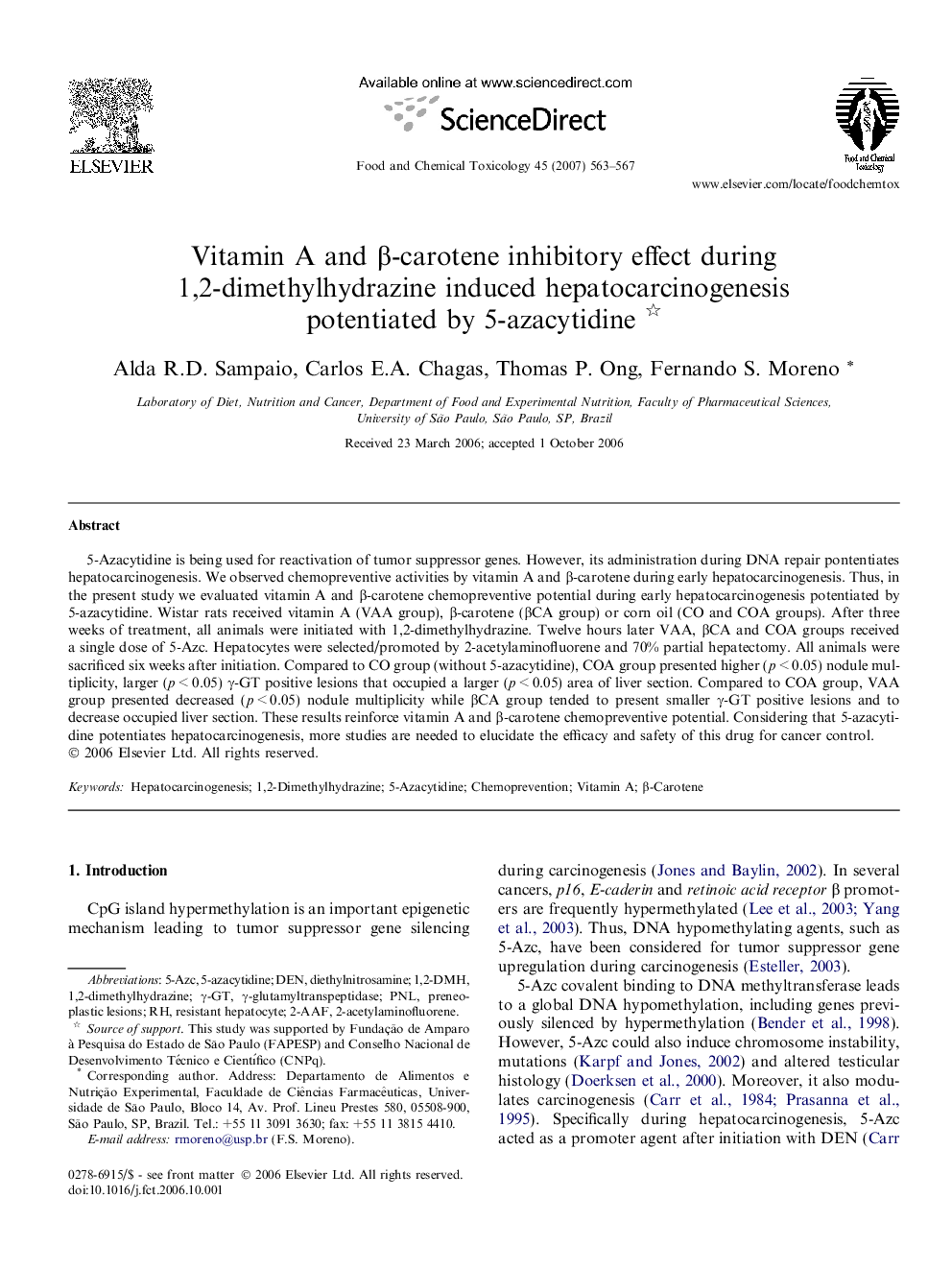| Article ID | Journal | Published Year | Pages | File Type |
|---|---|---|---|---|
| 2586863 | Food and Chemical Toxicology | 2007 | 5 Pages |
5-Azacytidine is being used for reactivation of tumor suppressor genes. However, its administration during DNA repair pontentiates hepatocarcinogenesis. We observed chemopreventive activities by vitamin A and β-carotene during early hepatocarcinogenesis. Thus, in the present study we evaluated vitamin A and β-carotene chemopreventive potential during early hepatocarcinogenesis potentiated by 5-azacytidine. Wistar rats received vitamin A (VAA group), β-carotene (βCA group) or corn oil (CO and COA groups). After three weeks of treatment, all animals were initiated with 1,2-dimethylhydrazine. Twelve hours later VAA, βCA and COA groups received a single dose of 5-Azc. Hepatocytes were selected/promoted by 2-acetylaminofluorene and 70% partial hepatectomy. All animals were sacrificed six weeks after initiation. Compared to CO group (without 5-azacytidine), COA group presented higher (p < 0.05) nodule multiplicity, larger (p < 0.05) γ-GT positive lesions that occupied a larger (p < 0.05) area of liver section. Compared to COA group, VAA group presented decreased (p < 0.05) nodule multiplicity while βCA group tended to present smaller γ-GT positive lesions and to decrease occupied liver section. These results reinforce vitamin A and β-carotene chemopreventive potential. Considering that 5-azacytidine potentiates hepatocarcinogenesis, more studies are needed to elucidate the efficacy and safety of this drug for cancer control.
